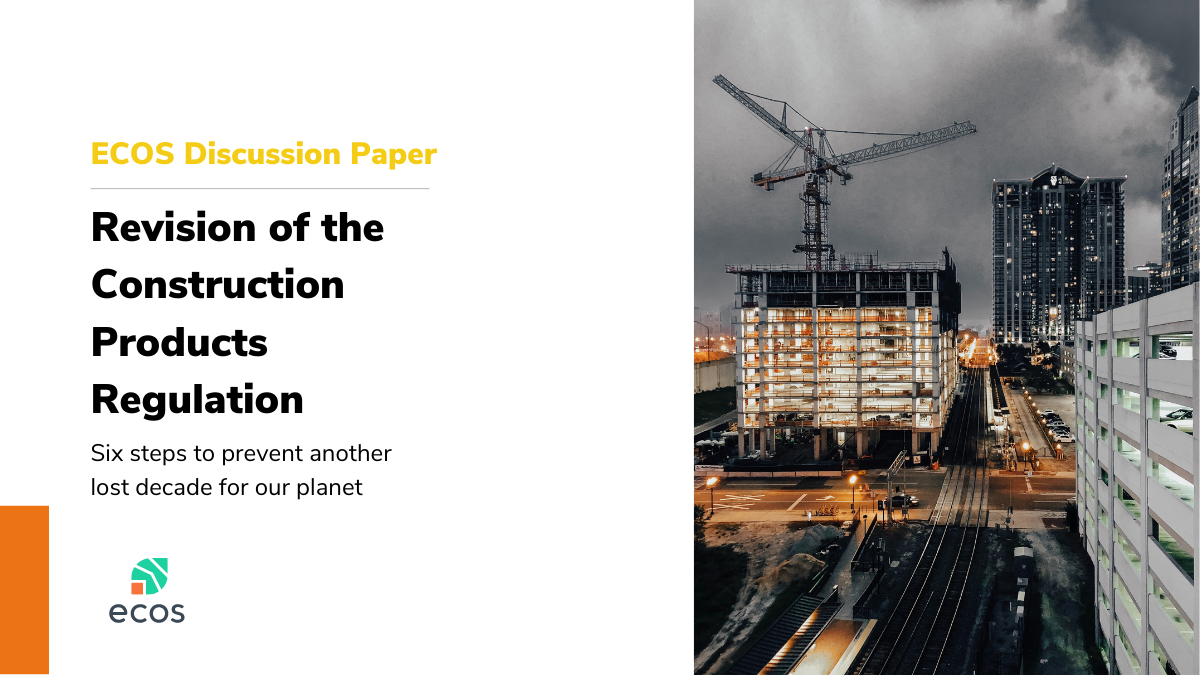ECOS Discussion Paper: 6 steps to amend the CPR
No other industry in the EU consumes more resources, energy and produces more waste by weight – and is a formidable polluter - than the construction industry. Ahead of the European Parliament's public hearing on 'Making the Internal Market for Construction Products fit for the 21st century', ECOS recommends six steps to amend the CPR.

Enormous amounts of materials and carbon are embodied in the bult environment. Common materials that are part of our houses and infrastructure, such as concrete, bricks, gypsum, lime and copper, require approximately 1.6 billion tonnes of raw materials per year, half of the EU’s overall consumption and an average of four tonnes for every EU resident. This figure is even more daunting when thinking that the sector produces one-third of overall waste generated in the EU, the majority of which does not get reused or recycled at present. Overall, construction products have an embodied carbon footprint of 250 million tonnes every year. Cement, steel, aluminium and plastics account for 80% of those emissions.
In view of timid changes, and to align to CPR with more effective instruments such as the ESPR, we outline six points on how the CPR must be strengthened to put an end to all blind spots limiting its efficiency and ensure its contribution towards an effective decarbonisation of the construction sector.
Our main takeaways:
▶️There is no reason why #construction products should escape environmental regulation.
▶️If not amended, the CPR revision will lead to no change by working through a failing standardization system.
▶️Ecodesign has worked – let’s implement other instruments. https://t.co/txyJIMcQCT pic.twitter.com/BMeQRcWUEE— ECOS 🌳 (@ECOS_Standard) October 11, 2022

 By
By 
